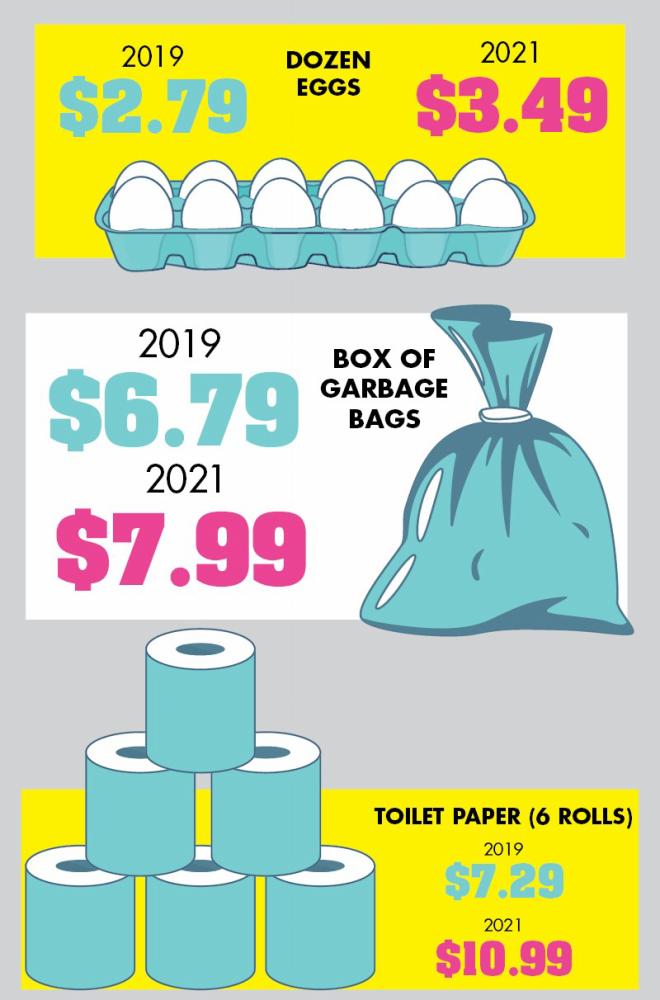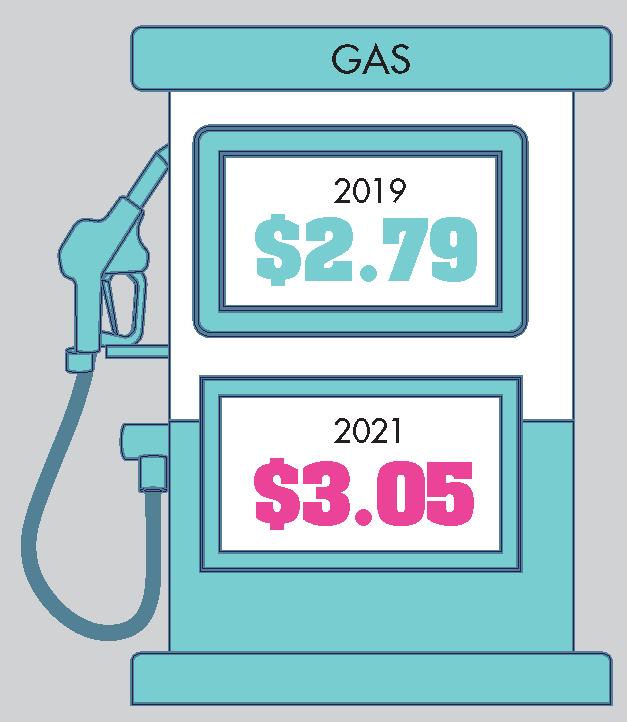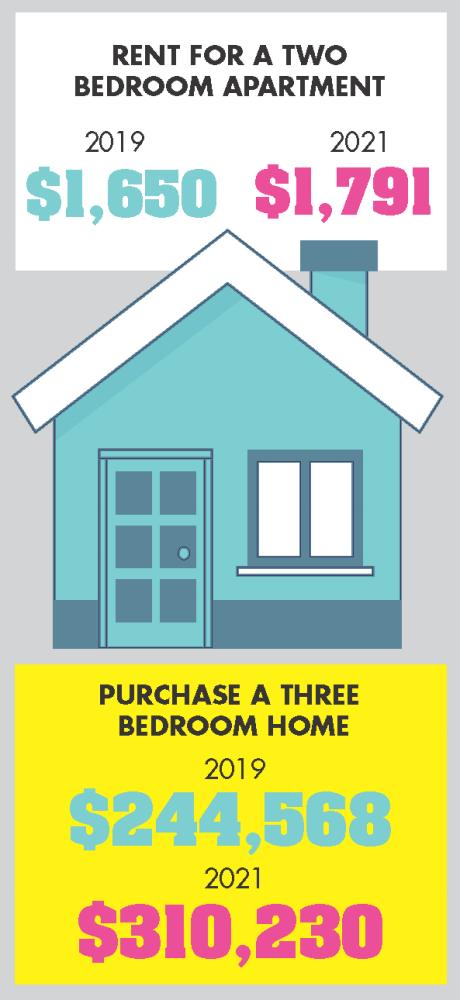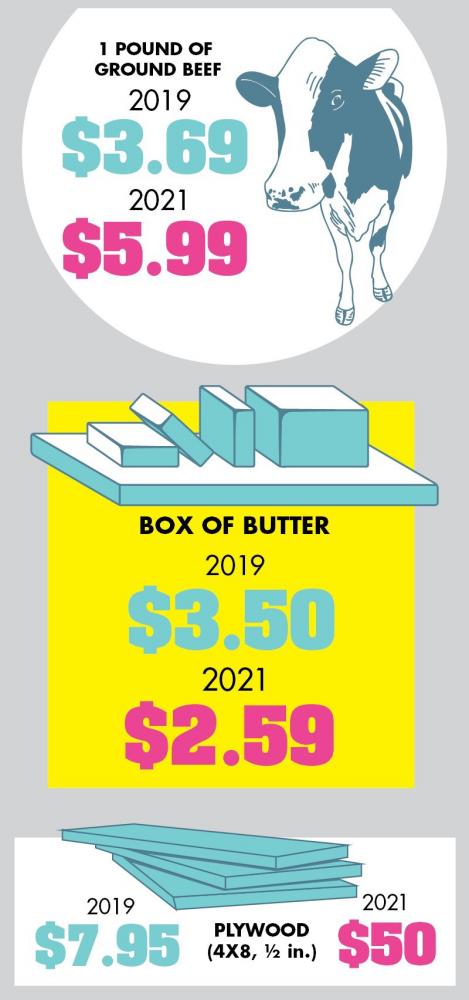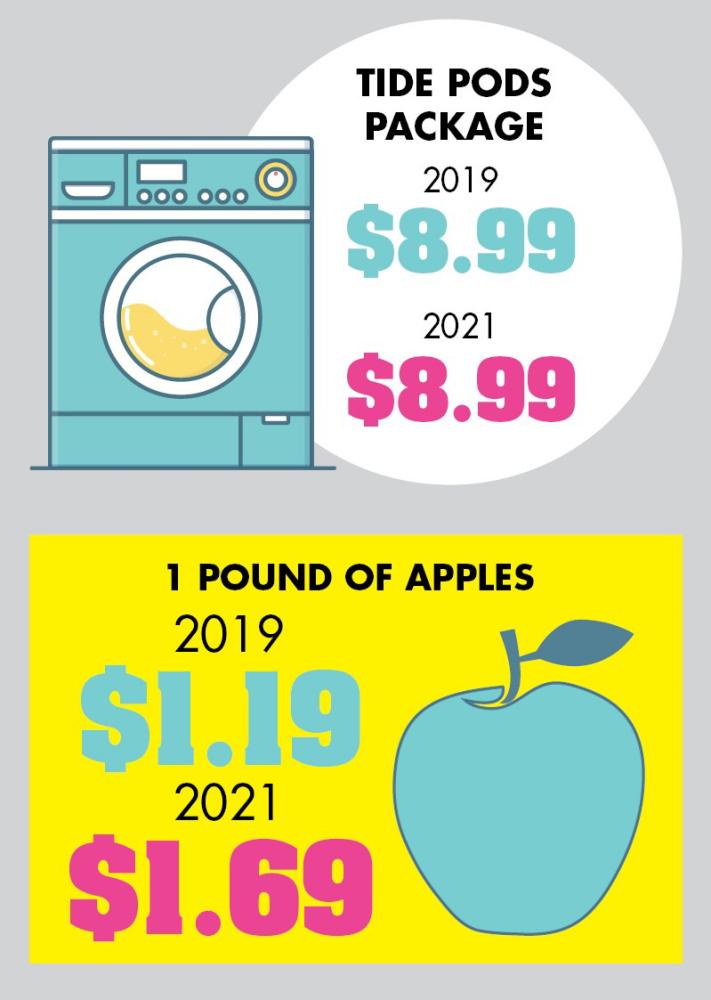Blame the pandemic: Living is much more expensive than it was two years ago
Cost of living. People are digging deeper into their wallets to pay for necessities like rent and groceries.
COVID-19 has changed the landscape. And in doing so, it has affected the most basic of necessities - food, housing, fuel.
It’s made some items harder to get and certainly more expensive. Anyone who has bought a piece of plywood lately must be dumbfounded at what today costs $50 a piece when it was $8 to $9 a board two years ago. And that’s if you can find plywood.
From groceries to housing, living in the tristate area is much more expensive than it was two years ago.
And though demand isn’t what it was peak-pandemic, some grocery prices endured a price hike since 2019: a carton of name brand eggs will cost an extra 70 cents in 2021.
Local business owners and real estate agents say the pandemic is to blame.
A new meaning for the word ‘home’
“Since COVID-19, there has been a gravitational pull for personal space, privacy, clean air and backyards,” said Jennifer DiConstanzo of Green Team Realty. “Because people were confined to their home, the word ‘home’ has a whole new meaning now.
“If you have your own piece of property, you have the ability to customize your space,” she added. “People of the city have let go of their apartments and have made Orange County their permanent home.”
DiConstanzo estimates that average price of a three-bedroom house in Orange County is about $310,000 today – a 27% increase since 2019.
An influx of new buyers largely from New York City and surrounding metropolitan area moved up to the suburbs throughout 2020, resulting in bidding wars over the limited number of homes and land available.
‘Seven days go sell a house’
Weichert Realtors’ Dawn Corbo saw a similar pattern.
“Overall in Sussex County, we’ve seen a surge of buyers,” she said. “Due to the lack of inventory here, sales prices increased substantially. It takes seven days for a house to sell on the market.”
Corbo, who has been selling real estate in Sussex County for 29 years, estimates that the trend will continue through fall 2021. Today, it costs approximately $370,000 for a three-bedroom home in Sussex County, a $70,000 increase when compared to pre-pandemic numbers.
The cost of building
And those planning to build instead of buy aren’t getting any price breaks. A piece of plywood that cost about $8 in 2019 is now $50 today.
While it may seem that the increased number of families buying up property in town is what caused lumber prices to skyrocket, Steve Visaggio of AB&S Home Improvements said that the surge is due to pandemic-related supply chain issues.
“Most of our lumber comes from overseas and Canada,” Visaggio said. “When the pandemic hit, most of the lumber mills shut down, which caused the companies to inflate the price for a bigger profit.
An order that used to take two weeks to be delivered now takes about fourteen.
“I am understaffed and scheduling has been frustrating because it takes so long for materials to get here,” he said. “Though this has been frustrating, I understand that everyone is going through it, too. My customers have been very patient, which I’m grateful for.”
Yes, toilet paper prices are still up
Some basic household items, like laundry detergent and diapers, remained steady over the past two years. But others - including fresh meat, produce and, yes, toilet paper - saw a price hike.
Junior Dabashi of Key Foods in Milford, Pa. said suppliers have increased their prices for a few reasons: they’re short-staffed, the increased cost of fuel makes shipping more expensive and the heightened demand.
“Since people were home, they bought more and cooked at home more,” DaBashi said. “As the demand increased, so did the prices. Things aren’t 100% back to normal, but we are getting there.”
